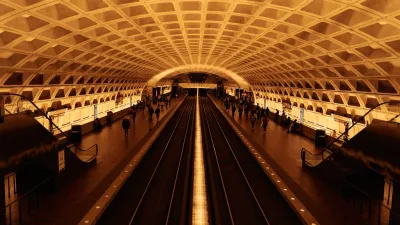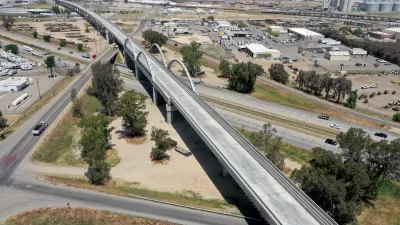Federal money is making high-speed rail possible, but state governments are unsure if they can afford to maintain and operate the systems once they are in place.
Daniel C. Vock of the Pew Center on the States writes, "The price tag of high-speed rail remains a big sticking point, even in Wisconsin, where the federal government granted the state its full request for the Milwaukee-Madison leg. At issue is whether the state could subsidize the route's operating costs once trains start to run in 2013. The state, in its application (PDF), estimated that the Milwaukee-Madison route would require $7.5 million a year in state subsidies, on top of the $8.1 million needed to keep trains running between Milwaukee and Chicago."
Wisconsin Republicans are up in arms over the cost of the new system, and are promising to sink it if they get elected.
FULL STORY: The not-so-fast track for high-speed rail

Alabama: Trump Terminates Settlements for Black Communities Harmed By Raw Sewage
Trump deemed the landmark civil rights agreement “illegal DEI and environmental justice policy.”

Planetizen Federal Action Tracker
A weekly monitor of how Trump’s orders and actions are impacting planners and planning in America.

The 120 Year Old Tiny Home Villages That Sheltered San Francisco’s Earthquake Refugees
More than a century ago, San Francisco mobilized to house thousands of residents displaced by the 1906 earthquake. Could their strategy offer a model for the present?

In Both Crashes and Crime, Public Transportation is Far Safer than Driving
Contrary to popular assumptions, public transportation has far lower crash and crime rates than automobile travel. For safer communities, improve and encourage transit travel.

Report: Zoning Reforms Should Complement Nashville’s Ambitious Transit Plan
Without reform, restrictive zoning codes will limit the impact of the city’s planned transit expansion and could exclude some of the residents who depend on transit the most.

Judge Orders Release of Frozen IRA, IIJA Funding
The decision is a victory for environmental groups who charged that freezing funds for critical infrastructure and disaster response programs caused “real and irreparable harm” to communities.
Urban Design for Planners 1: Software Tools
This six-course series explores essential urban design concepts using open source software and equips planners with the tools they need to participate fully in the urban design process.
Planning for Universal Design
Learn the tools for implementing Universal Design in planning regulations.
Clanton & Associates, Inc.
Jessamine County Fiscal Court
Institute for Housing and Urban Development Studies (IHS)
City of Grandview
Harvard GSD Executive Education
Toledo-Lucas County Plan Commissions
Salt Lake City
NYU Wagner Graduate School of Public Service





























